
11 minute read
The Magnificent Maldives
FEATURE AND PHOTOGRAPHY SARAH MESSER – THE ADVENTURES OF A UAE DIVER

The last seven months of diving in the UAE has really opened this addicted diver’s eyes to the great reefs and wrecks we have right on our doorstep. We’ve had some of the clearest water and best vis I have seen in my time diving here over these last few months, and the marine life has been more abundant than ever. From whale sharks in Abu Dhabi marina, to large numbers of eagle rays congregating in Dubai marina, the fishies have been enjoying the pandemic related peacefulness it seems! And thanks to spending all our time here with weekends to fill, my dive centre friends tell me they have never been busier for teaching courses, and we now have many newly qualified divers in the UAE. Hooray for more buddies!
Nevertheless, once the airports opened and international travel restrictions eased off in August, I started to wonder where I might be able to get to for some further afield diving. It became pretty clear that going too far into Asia was still risky. Travel regulations and lockdowns were changing rapidly, I had to be confident that I would be safe. When you start looking for tropical destinations closer to home… the Maldives is the best of the best. And lucky for me, the regulations were manageable. With no mandatory quarantine for tourists holding a negative PCR test, it shot right up to the top of my destination list. (I should add here that this was not my first trip to the Maldives, in fact it was my fourth).
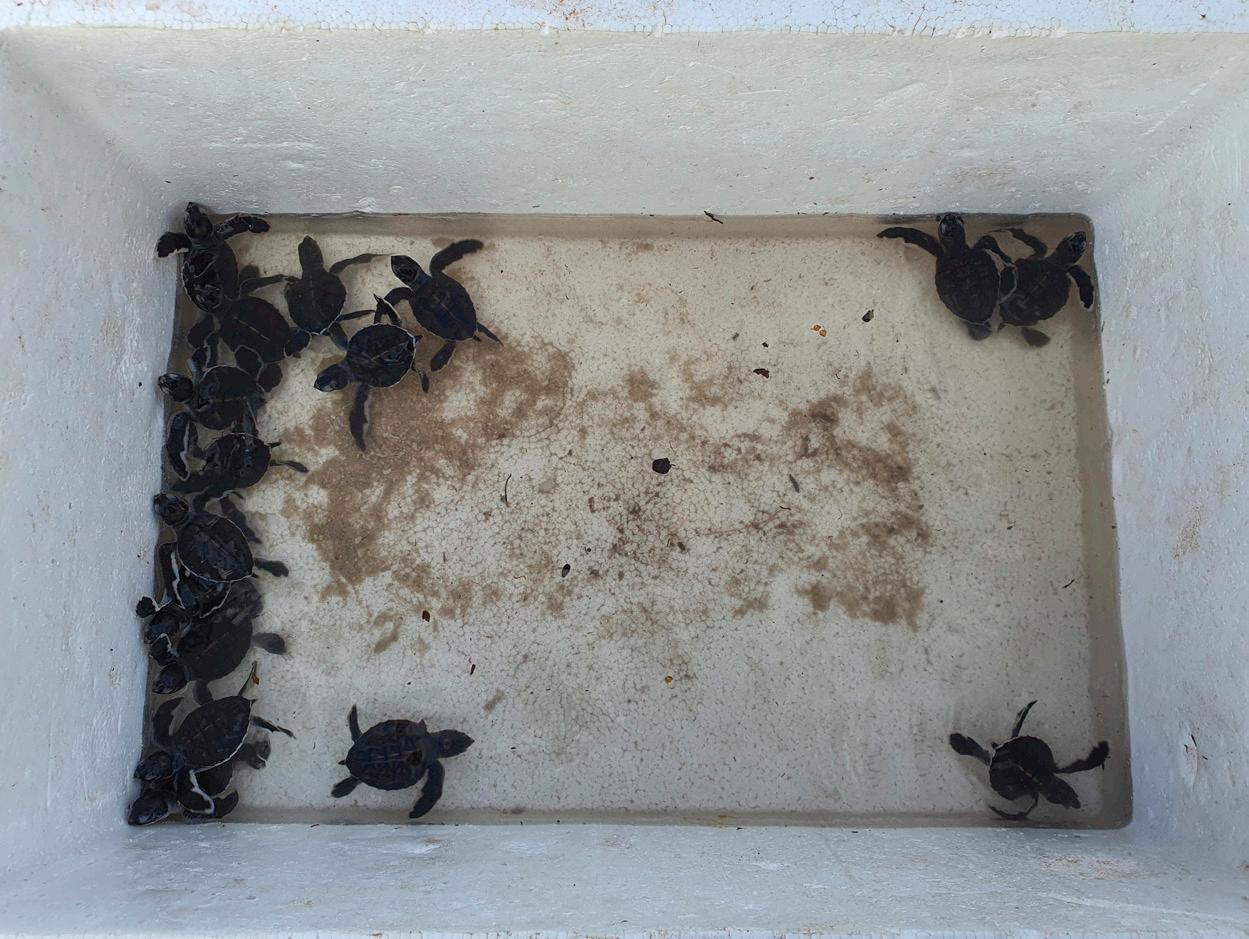
RESORT, ISLAND, OR LIVEABOARD
The Maldives is a small archipelago country made up of 26 atolls covering approximate 298 square kilometres. Male is the capital and most densely populated island, and is the home of the main international airport, Velana. Male is not particularly somewhere to stay over unless you need to, it’s more city than the non-urban sea-scape you expect, and most tourists, whether divers, holiday makers or honeymooners, immediately travel on to their destination.
The biggest choice you need to make is what kind of diving holiday you want. There are many, many options, although your budget will likely set your options. As a popular luxury destination, people often think that it will be too expensive, but there is definitely a price range for everyone.
So what is the difference between these options? Liveaboards are self-explanatory and there are many types, big and small, long stays and short safaris. The resorts tend to be a smaller island with only one hotel available. The other islands vary in size and will have several hotels, guest houses, and B&B options. The latter also tend to have resident Maldivians living there and are often dry (no alcohol is served). Almost all the hotels, whether island or resort will have a range of accommodation available and different packages. Key tip – remember to look at what eating options there are, if you are at a resort hotel you will likely find half board or full board, the best option as there will be few other choices.
As we are addicted divers, make sure you’ve done your homework on the local dive centres. Firstly, make sure there is one available! And second, check out the reviews. You will find plenty around online, from Trip Advisor or other diving websites. You want to know you are going somewhere with qualified and experienced dive instructors, with a strong safety record.

LOCATION, LOCATION, LOCATION
What the Maldives lacks in land mass, it gains in diversity of dive locations. The main atolls all offer something very different, so again you need to do your homework as to what you want to see.
South Male is less about the coral and all about the big schools of fish and large pelagics – grey reef sharks, eagle rays and mantas. There are several atolls that make up the North – which is where my trips have so far always taken me. The Baa Atoll is home to Hanifaru Bay, famous for the significant numbers of manta rays and whale sharks from March to November. Coral quality is very good at some dive sites, less so in others. The Far North Atolls are less frequented and by the very nature of being more remote are home to more species of sharks and pelagics, plus giant trevallies. The Southern Atolls, and particularly those in the deep south are fantastic for sharks, jacks and tuna, plus in some locations tiger sharks, threshers and hammerheads. The south also has cave and swim-through dives, if this is what floats your boat.
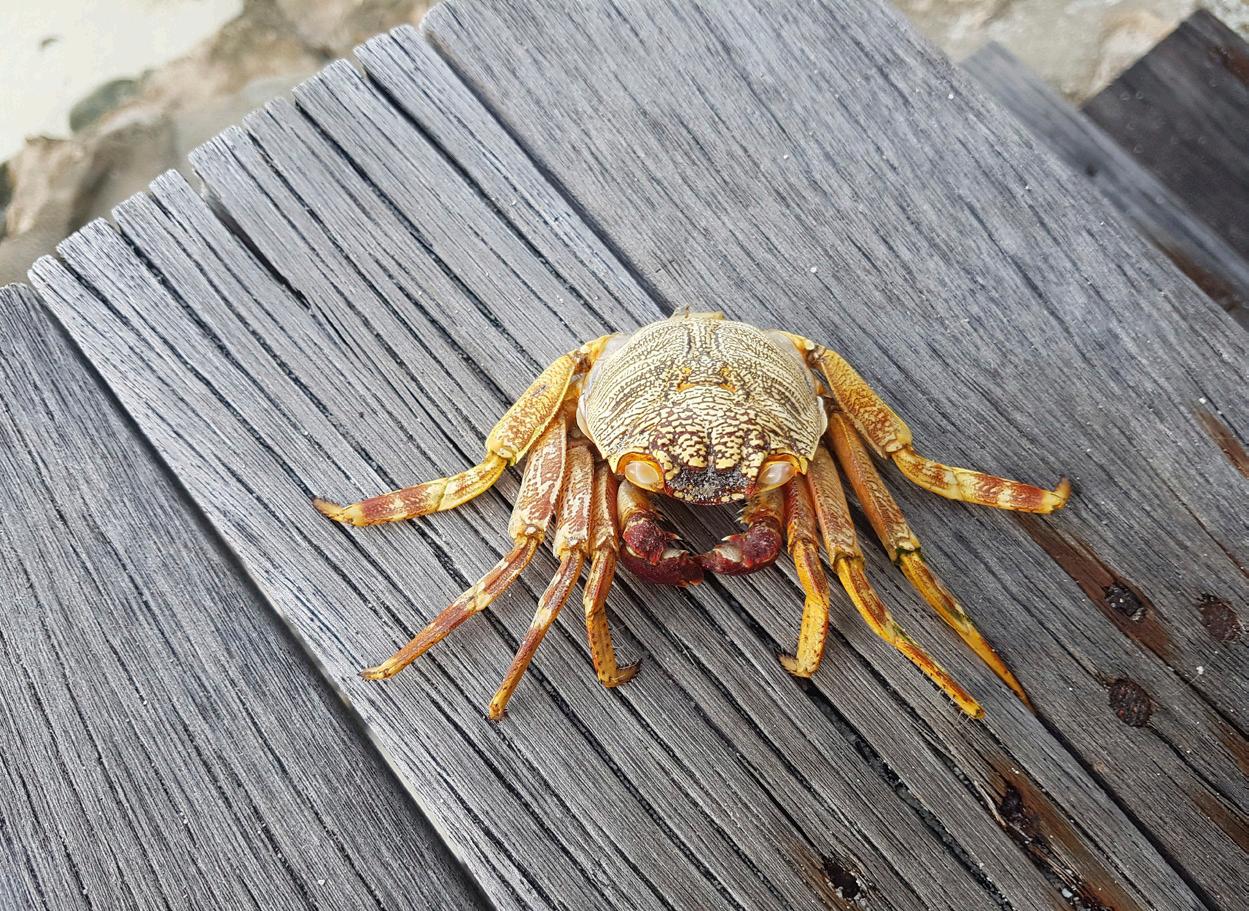
GETTING THE TIMING RIGHT
I have spent all of my diving trips so far on the North Ari Atoll at a tiny island resort called Gangehi. More on that later. The reason I have been back to this atoll so many times is the number of varied dive sites, the quality of the coral is good once you get into the open sea, and most importantly to me, the manta rays are a-plenty! But as with any diving destination, the timing really matters.
The Maldives is so close to the equator that it is actually in the southern hemisphere, so their winter months are the same as our summer months. In fact, time zones across the country are not equal, and the islands further away in the north are an hour ahead of central and the south.
The temperature is fairly consistent throughout the year, hovering religiously around 29/30 degrees Celsius. The best weather is November to April, and the monsoons are May to October. It’s a tropical climate, so when it rains, it rains hard, but it generally passes within an hour or two and the sun shines again. The sea temperature is cooler in the monsoon months (it was 26ºC on my trip in September, and is 29/30ºC outside of monsoon season) and visibility is not as clear (however don’t be thinking Fujairah, UAE here, think Red Sea on a bad day).
You can expect to see more marine life November to April. I have so far been to the North Ari Atoll in March, April, July and most recently September. In my experience March/ April were the best months for fish and manta spotting, and September was the quietest month (but not without its highlights).

THE DIVING – PART I
It’s a tragic truth that the Maldives does not look like it did 10 years ago, thanks to extensive coral bleaching. At the sea level to around 5/6 m, particularly close to the islands, almost everything is lifeless and white. It’s quite distressing to see if I’m honest. You will see on some dives magnificent bleached structures, and you can imagine what it once must have looked like. This shouldn’t put you off though, there are many dive sites where there is healthy and strong hard and soft coral, in beautiful multi-colours. Your dive guide will know exactly where to take you, often these sites are further out in the open ocean where they benefit from deeper, cooler water flow.
Importantly, despite the state of the corals there is still plenty of fish spotting to be done and you will see huge shoals of fish in many places.
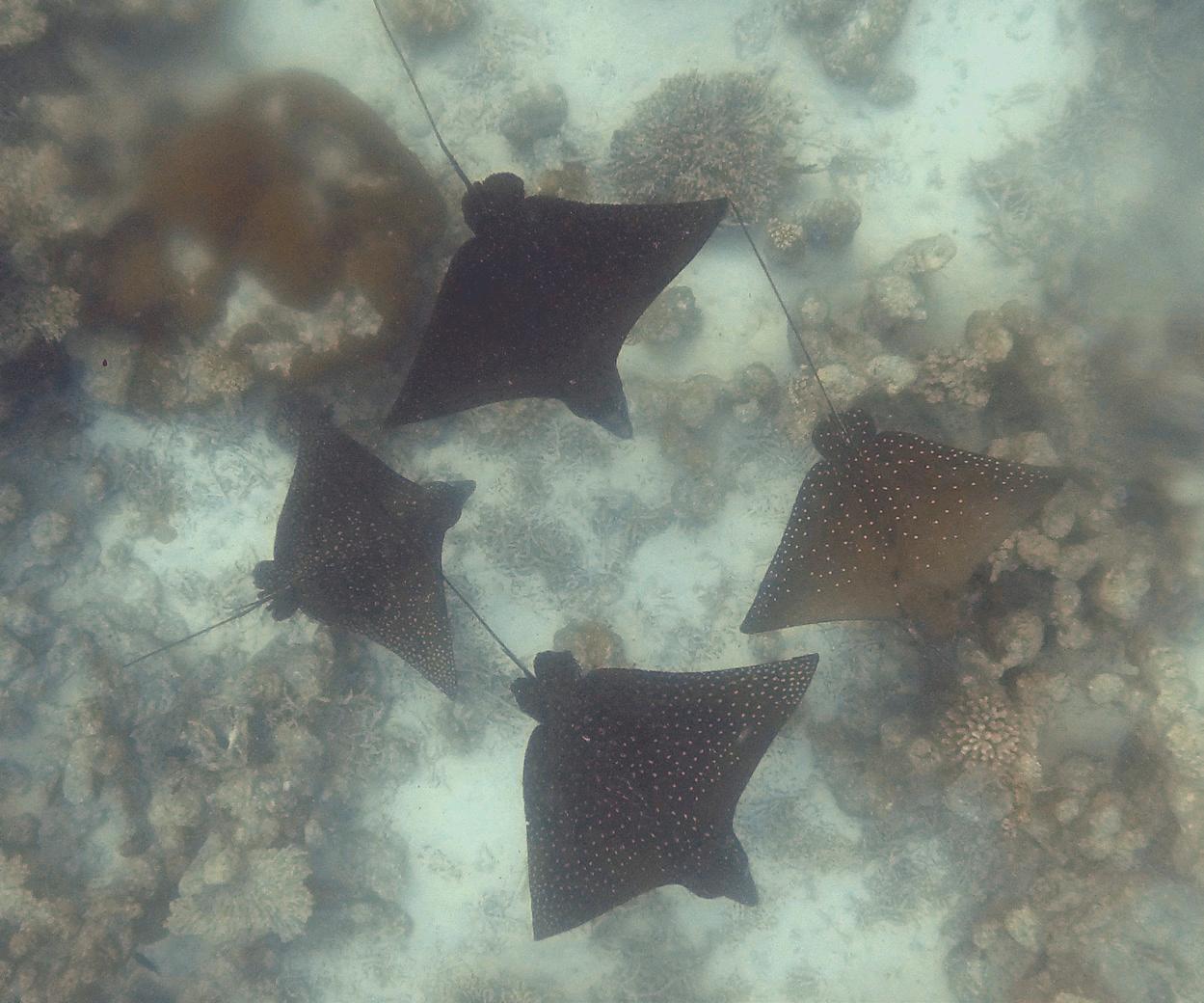
The Maldives can be challenging diving. It is famous for its channels between atolls, where currents are strong and unpredictable. These are favourite hangouts for reef, leopard and nurse sharks. In the far north and south, you’re in the open ocean with currents passing each other. This makes it all the more fun for an addicted diver! There are many drift dives, and it’s a general rule that where the currents are strong, the coral is healthier, because fast moving ocean is both cooler and bringing nutrients along with it. This usually corresponds with more fishies, more pelagics, and more predator hunting to see. So get your brave face on and get stuck in, the more challenging the dive, the more there will be to see. Another reason to do robust homework about the dive centre you go to.
On every visit, I have met divers who are on their 20th trip, their 30th trip, heading towards their 40th. I myself have been 4 times in 3 years and am intending to go again at the end of this year to go to the central atolls. The diving is nothing short of spectacular.
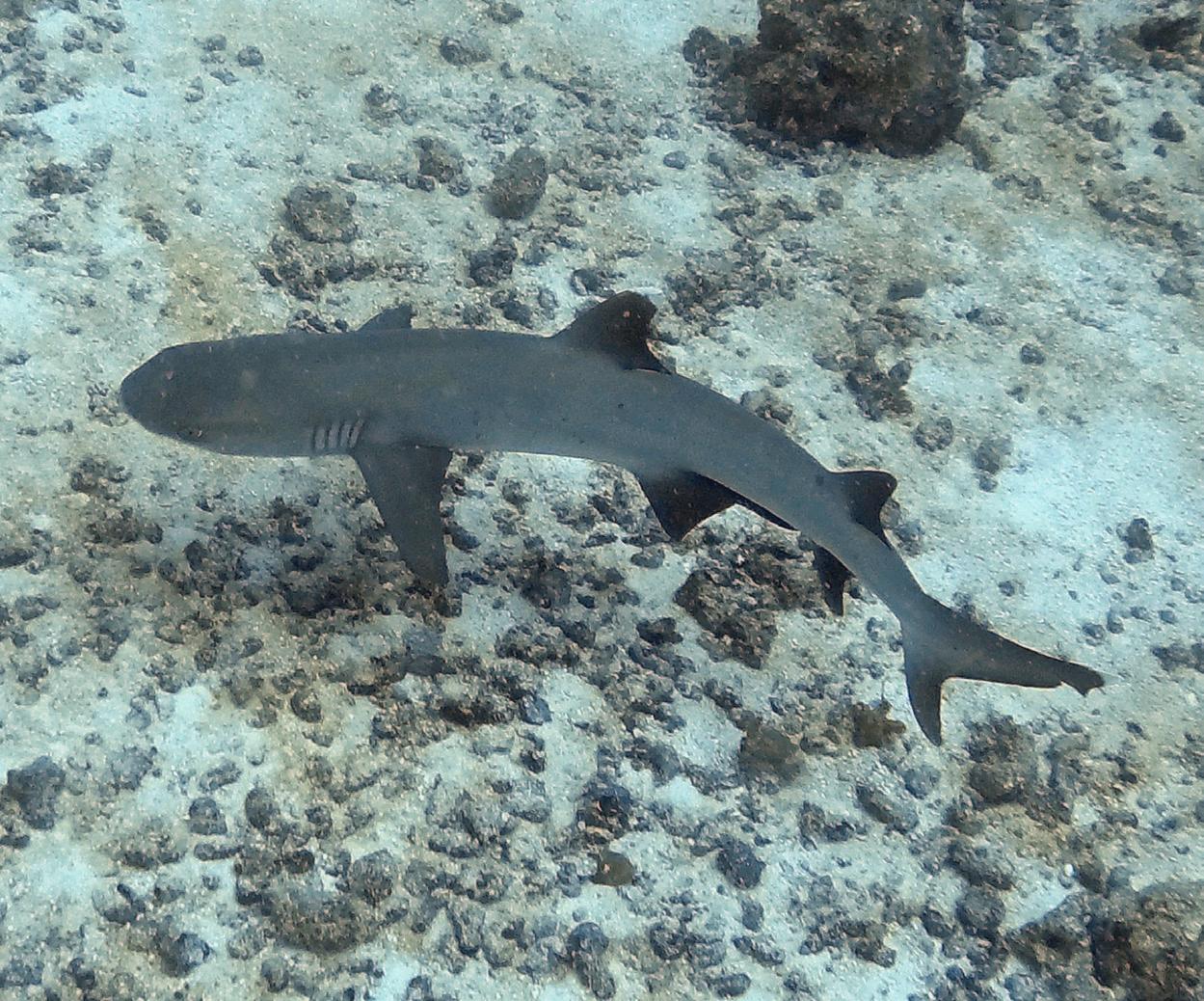
NORTH ARI ATOLL – GANGEHI ISLAND
Gangehi is a 40 min seaplane flight or 60 min speedboat ride from Male. There is one hotel on the island, the Gangehi Island Resort and Spa. The entire island is so small you can walk around it in 7 mins (if you’re walking really slowly). There is a gym in case you need to get your 10,000 steps in without walking in circles. In normal times, the island has two restaurants open, and two boats running for diving and excursions, plus guests from around the world. The pandemic is making life difficult for them, as I suspect it is for most of the hotels in such a tourist dependent place. One restaurant remains open for now, and one boat is operational. Guest levels are heavily reduced and have been all year. You can choose from garden, beach or over water accommodation, with different price levels for each.
Like most islands, their house reef is damaged from coral bleaching but still has its fair share of adult and baby reef sharks, eagle rays, blue spotted rays, a resident turtle, octopus, and crabs of all shapes and sizes.
The island’s staff are wonderful – welcoming, helpful, no request is too much for them. The food is delicious, fresh seafood from the days catch, Maldivian feasts, and because of the smaller number of guests, the chefs will cater to your daily cuisine whims. I also highly recommend the spa, the lady who is there currently is a rare masseuse who knows how to send you into a spa-induced relaxation coma.
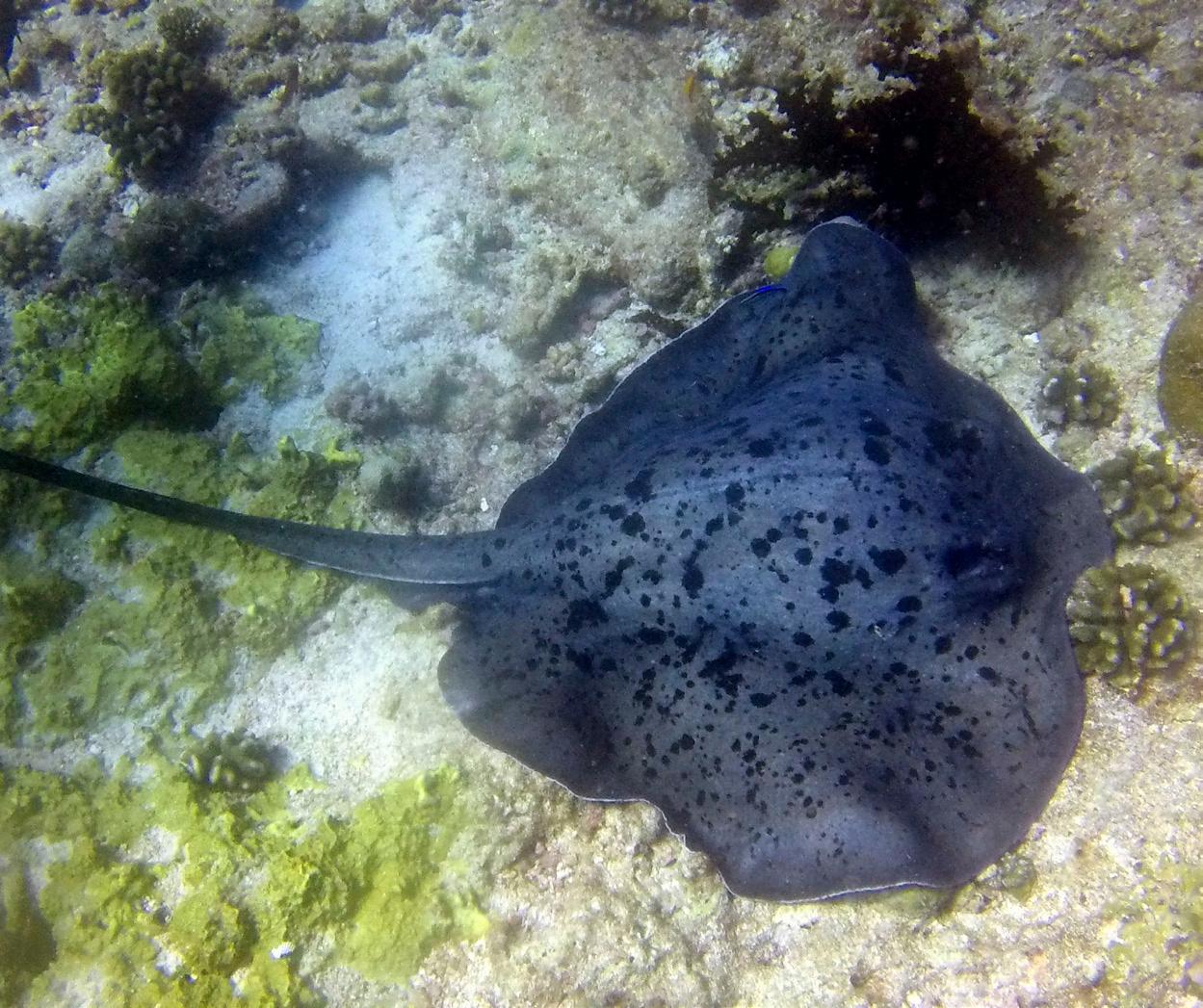
THE DIVING PART II
The dive centre is well equipped and on every visit the boat crew and staff have been the same. They understand the ocean, dive sites and currents like an encyclopedia. It’s amazing and comforting to be part of. Nitrox is available for a fee.
Gangehi have something like 50 dive sites within reach. They are close to a channel with crossing currents which means daily shark viewings. Their schedule is usually two dives in the morning, lunch on the island, and one dive in the afternoon. With enough divers or snorkellers they will organise day trips to the further away sites too. Night dives are possible if the currents are favourable, and are well worth doing (my best night dive ever was from Gangehi in 2019).
On this visit, with so few guests, I was often the only diver and so had a truly personalised experience. Awesome! We could go where I wanted, and in this instance I was lucky enough to be there with Gill, the resident instructor. He had not been at the island for many months, and most of those had been in lockdown so he was still learning the dive sites himself. With many years of experience from Egypt and other diving destinations under his belt, his attention to safety is high and it was really great fun to explore these sites together, some of which were new to me and some of which I had been to before.
I mentioned earlier that September was the quietest visit I had. Having said that, we were lucky enough to see two passing mantas, many reef, leopard and nurse sharks, as well as several stingrays. There was something to write home about on every dive. On my March/April visits, there have just been more of these and the cleaning stations which were quiet now, were then heaving cities of pelagic activity.

A MUST GO DIVING DESTINATION
From the UAE, the Maldives is easily accessible. For an addicted diver living in the UAE, it’s a must go to destination. Take note: once you go, you can’t help but go back!
Some key things to look out for:
• Not many hotels include diving in their prices, it’s calculated separately at the resort. If you’re on a budget, calculate what you can do carefully.
• Most resort dive centres will offer dive packages, cheaper per dive the more diving you do.
• Tax is 25% – make sure you include this in your budget.
• Look out for the transfer costs from Male, and remember the sea plane only allows 20 kg of luggage in the price. On the plus side, once you’ve packed your scuba gear you only need your swim wear flip flops and something to cover up in on top.
• Plan your timings carefully so you’re more likely to see what you want to see.
If my plans go ahead, I will have a different Maldives experience to tell you about in the next EDA magazine, after taking a liveaboard around the central atolls. Till then, wishing you all happy and safe diving, buddies!

MORE INFO TO PLAN A TRIP:
GANGEHI ISLAND RESORT: https://gangehiresort.com/
LIVEABOARDS: www.liveaboard.com/diving/maldives
MALDIVES DIVING INFORMATION: https://travel.padi.com/d/maldives/

![[CREATIVE UNDERWATER PHOTOGRAPHY] – My Journey](https://assets.isu.pub/document-structure/201130110314-da7e75bbc6438b7bb217122d1d3a8837/v1/4efae451054a0fe043e1a48076d2642a.jpg)








